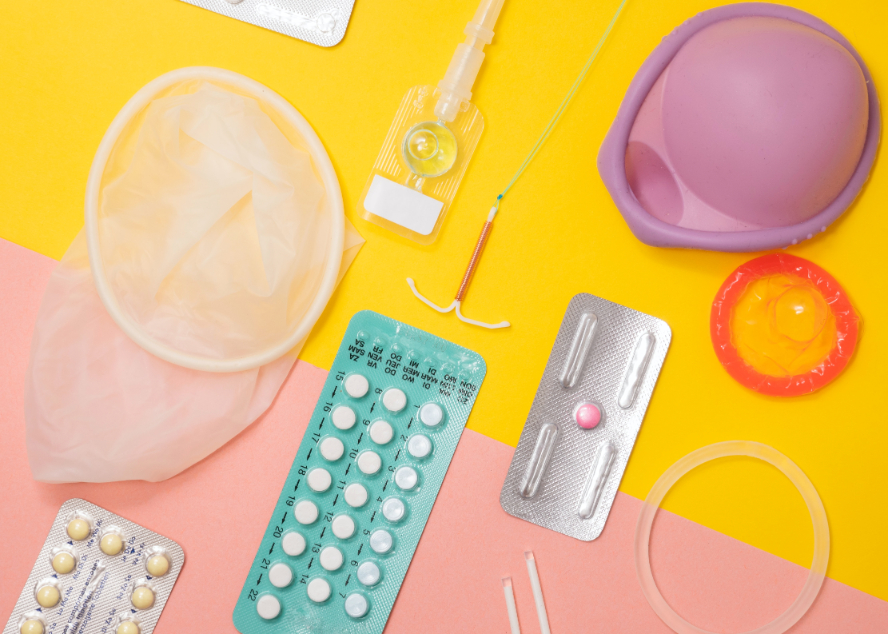

Knowledge|Male Fertility
What to Expect from a Semen Analysis and How to Understand the Results
When a couple has been trying unsuccessfully to get pregnant for over one year, it’s a good idea for both partners to get checked to see if there are any medical conditions preventing pregnancy. Studies show that in up to 50% of couples who are struggling to conceive, it’s due to male factor infertility. Men can check the health of their sperm with a semen analysis. Here we give you the lowdown on what this is, what to expect, what it looks for, and how to understand the results.
But first, a bit of background. Many people use the words “sperm” and “semen” interchangeably, but they are two different things. Semen is the liquid that comes out of the penis during ejaculation, and sperm cells live inside semen. Sperm is the male reproductive cell which fertilizes the egg to form an embryo.
What tests are done for sperm?
A semen analysis is a lab test for male fertility where a technician examines a semen sample under a microscope. The purpose of a semen analysis test is to look for any abnormalities in sperm count, movement, or shape, among other factors, that could be interfering with conception.
Where to get a semen analysis?
Talk to your doctor about arranging a male fertility test. You will likely need to visit a fertility clinic for your semen analysis. It’s generally not recommended to use at-home testing kits for your semen analysis because they haven’t been extensively studied. Plus, some kits just do a sperm count test but don’t look at other parameters that are important for male fertility. If you’re worried about your fertility, it’s best to have a medical professional perform your semen analysis rather than relying on at-home testing kits.
What can I expect from a semen analysis?
To prepare, it’s helpful to know what you should not do before semen analysis. Your provider will ask you to avoid ejaculating from intercourse or masturbation for 2-7 days before the test. This makes sure that your sperm counts are at their highest level so that your semen analysis is accurate.
Usually, the sample is provided via ejaculation. You will go into a private, comfortable room at the doctor’s office and ejaculate into a sterile container. Bring your smartphone with you to help you get in the mood in case the office doesn’t have inspirational materials on hand. Avoid using lubricants other than the ones provided by the office. Other lubricants, including saliva, may affect the results of your sample.
Because sperm count and semen quality can vary from one day to the next, some doctors request another sample a few weeks later to confirm the results.
If you are uncomfortable collecting in office, you may pick up an at-home collection kit from the clinic. You will still be required to set up an appointment time to drop off your sample and the sample will need to be dropped off within one hour of collection. If you are not able to masturbate due to cultural or religious values, you may be able to collect your sample in a special type of condom while having sex at home. You may speak to your provider about this option, but please note that not every clinic does provide these condoms at their office. You may purchase them on e.g. Amazon by searching for “Male-Factor Pak Condoms”.
Lastly, if you take any medications or supplements, be sure to tell your doctor, as some can alter your results.
It’s natural to feel nervous or uncomfortable about your semen analysis. Try to remember that this is a routine investigation for male fertility and many men have done it before you. There’s absolutely nothing to be ashamed of. Getting a semen analysis is an important step to find out if there are any factors impacting the health of your sperm or semen so that you can get treatment and improve your chances of starting a family.
What a semen analysis looks for:
This lab test examines several factors of semen and sperm to determine if there’s anything causing fertility problems:
Sperm count: Number of sperm per millilitre of semen. The World Health Organization (WHO) defines a normal sperm count as ≥ 15 million per millilitre of semen.
Sperm morphology: The size and shape of sperm cells. Healthy sperm has a round head and a long, strong tail. The WHO states that ≥ 4% of sperm should have a normal shape.
Sperm motility: Sperm movement and ability to swim towards an egg. According to the WHO, ≥ 40% of sperm should be active and have a good quality of movement.
Vitality: Percentage of live sperm in semen. The WHO states that ≥ 54% of sperm should be alive.
Semen factors:
pH level: If semen is too acidic, it can affect sperm health.
Semen volume: How much semen is in the sample (in millilitres). According to the WHO, ≥ 1.4 millilitres of semen is normal for ejaculation.
Time to liquefaction: How fast semen changes from a sticky substance to a liquid. Ejaculate should liquify within about 20 minutes.
White blood cells: Indication of infection or inflammation.
What the results of a semen analysis mean
An abnormal result from a semen analysis indicates that one or more of the above factors doesn’t meet the minimum medical standards for healthy sperm. So, there are lower chances of getting a partner pregnant.
Here are the possible diagnoses after a sperm analysis and what they mean:
Normozoospermia: the sperm is normal.
Oligozoospermia: low sperm count.
Azoospermia: no sperm were found in the semen sample.
Asthenozoospermia: not enough sperm are moving.
Teratozoospermia: there aren’t enough normally-shaped sperm.
Oligo-Astheno-Teratozoospermia: the sperm count, motility, and shape all don’t meet medical standards for healthy sperm.
Parvisemia/Hypospermia: there wasn’t enough semen in the sample.
Aspermia: there was no semen.
If you get one of these diagnoses, try not to panic. The first step will be a re-test with a new sample to confirm if there really is a problem. In case the results come back abnormal again, you may get further testing done and can move on to treatment. There are many ways to improve the health of your sperm to increase your chances of conceiving a child. For more on that, take a look at our article: What to do if you get an abnormal semen analysis.
Sources:
Semen Analysis. Cleveland Clinic. Accessed 13 April 2022.
Low sperm count. NHS. Accessed 13 April 2022.
Semen Analysis. MedlinePlus from the National Library of Medicine. Accessed 13 April 2022.
Sperm Disorders. MSD Manual (Professional Version). Accessed 13 April 2022.
Diagnosing Male Infertility. NYU Langone Health. Accessed 13 April 2022.
Diagnostic Tests for Male Infertility. ReproductiveFacts.org from the American Society for Reproductive Medicine. Accessed 13 April 2022.
Abnormal Semen Analysis. Urology Associates. Accessed 13 April 2022.
Kumar N & Singh AK: Trends of male factor infertility, an important cause of infertility: A review of literature. J Hum Reprod Sci. 2015;8(4):191-196.
WHO laboratory manual for the Examination and processing of human semen, 6th Ed. World Health Organization. 2021.
Boitrelle F et al.: The Sixth Edition of the WHO Manual for Human Semen Analysis: A Critical Review and SWOT Analysis. Life (Basel). 2021;11(12):1368.
Spermiogram. Kinderwunschzentrum Siegen. Accessed 14 April 2022.
Abnormal sperm counts. USC Fertility. Accessed 14 April 2022.
Brahem S et al: DNA fragmentation status in patients with necrozoospermia. Syst Biol Reprod Med. 2012;58(6):319-23.
Esteves SC et al: An update on the clinical assessment of the infertile male. Clinics (Sao Paulo). 2011; 66(4): 691-700.
Hamilton JA et al: Total motile sperm count: a better indicator for the severity of male factor infertility than the WHO sperm classification system. Hum Reprod. 2015;30(5):1110-21.Punab M et al:. Causes of male infertility: a 9-year prospective monocentre study on 1737 patients with reduced total sperm counts. Hum Reprod. 2017;32(1):18-31.
You might also like...

Female hormones: What you need to know about reproductive hormones, the menstrual cycle, and fertility
When you’re struggling with fertility, one of the first places to look is your hormones. Certain vital reproductive hormones are in charge...
Silvia Hecher
January 17, 2024

Fertility blood test: Why does it need to be cycle days 2-5?
When you test your fertility with LEVY, you will always check your basic reproductive hormone levels (including FSH, LH, TSH, Prolactin, Estradiol,...
Lena
September 8, 2022

Forms of amenorrhea and fertility
Not getting your period is a condition called amenorrhea. It’s important for fertility because not having a menstrual cycle with monthly ovulation...
Lena
January 18, 2022

What to expect when testing your fertility with LEVY
If you’ve been trying to conceive for a while, it’s totally normal to feel frustrated. Why hasn’t it happened for you yet,...
Kayla
February 3, 2022

6 Interesting Facts About Ovaries You Might Not Know
Women have two ovaries which are located on either side of the uterus. They’re around 3-5 cm long – about the size...
Kayla
April 20, 2022

Your Complete Guide to Birth Control Options and Fertility
If you’ve been using birth control for a while, you may be wondering how it can impact your fertility now that you...
Kayla
February 21, 2022

Fertility Foods for Women to Help You Get Pregnant Faster
How you nourish your body is key not only when you have a baby in your belly, but also to help prepare...
Kayla
March 22, 2022

What your AMH levels can tell you about fertility
FSH, LH, estrogen, progesterone… If you’re struggling to have a baby, you’re probably becoming an expert on all things hormones. AMH is...
Lena
August 25, 2022

Why Vitamin D matters for fertility
Vitamin D is a very important nutrient to keep our bodies healthy and working as they should. But did you know that...
Kayla
January 18, 2022





